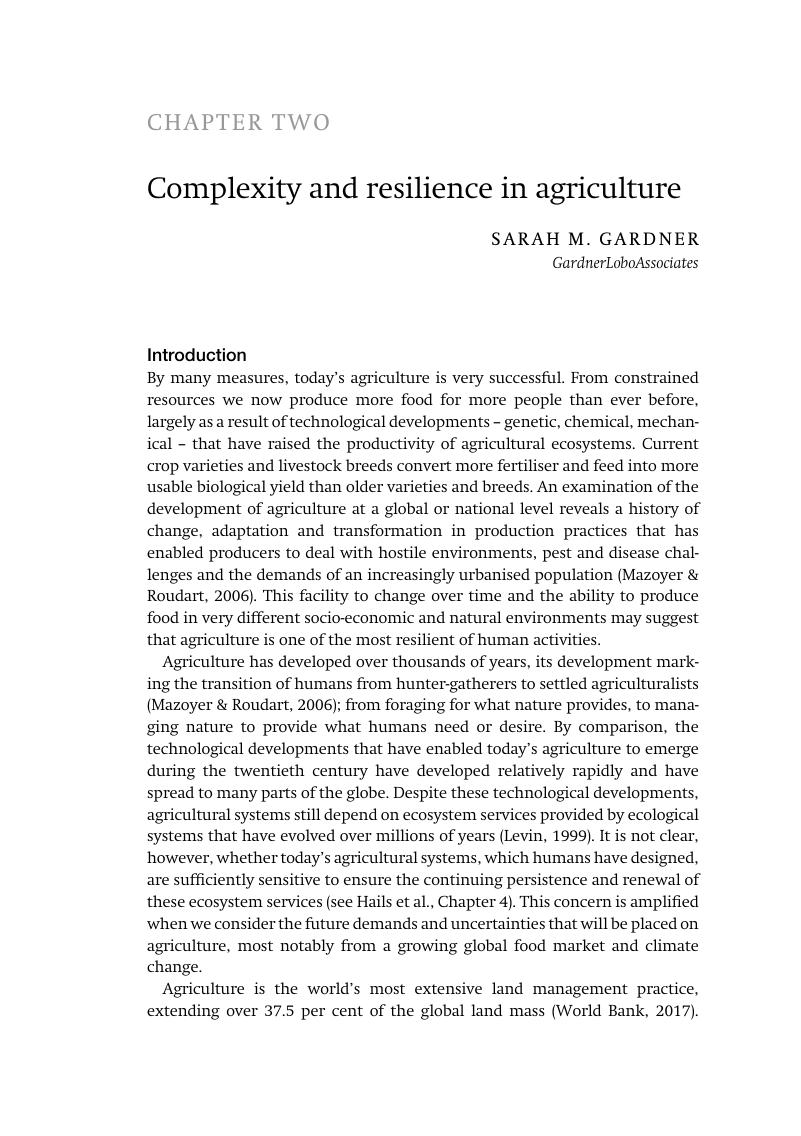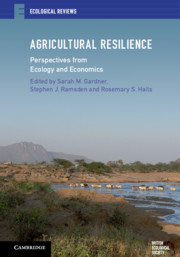Book contents
- Agricultural Resilience
- Ecological Reviews
- Agricultural Resilience
- Copyright page
- Contents
- Contributors
- Preface and acknowledgements
- Chapter One Introducing resilience
- Part I Biodiversity, ecosystem services and resilience in agricultural systems
- Chapter Two Complexity and resilience in agriculture
- Chapter Three Biodiversity and agriculture
- Chapter Four Determining the value of ecosystem services in agriculture
- Chapter Five Resilience in agricultural systems
- Chapter Six Building resilience into agricultural pollination using wild pollinators
- Chapter Seven Conflicts and challenges to enhancing the resilience of small-scale farmers in developing economies
- Chapter Eight Modern biotechnology and sustainable intensification: chances and limitations
- Chapter Nine Pastoralism, conservation and resilience: causes and consequences of pastoralist household decision-making
- Part II Integrating biodiversity and building resilience into agricultural systems
- Index
- Plate Section (PDF Only)
- References
Chapter Two - Complexity and resilience in agriculture
from Part I - Biodiversity, ecosystem services and resilience in agricultural systems
Published online by Cambridge University Press: 12 April 2019
- Agricultural Resilience
- Ecological Reviews
- Agricultural Resilience
- Copyright page
- Contents
- Contributors
- Preface and acknowledgements
- Chapter One Introducing resilience
- Part I Biodiversity, ecosystem services and resilience in agricultural systems
- Chapter Two Complexity and resilience in agriculture
- Chapter Three Biodiversity and agriculture
- Chapter Four Determining the value of ecosystem services in agriculture
- Chapter Five Resilience in agricultural systems
- Chapter Six Building resilience into agricultural pollination using wild pollinators
- Chapter Seven Conflicts and challenges to enhancing the resilience of small-scale farmers in developing economies
- Chapter Eight Modern biotechnology and sustainable intensification: chances and limitations
- Chapter Nine Pastoralism, conservation and resilience: causes and consequences of pastoralist household decision-making
- Part II Integrating biodiversity and building resilience into agricultural systems
- Index
- Plate Section (PDF Only)
- References
Summary

- Type
- Chapter
- Information
- Agricultural ResiliencePerspectives from Ecology and Economics, pp. 13 - 38Publisher: Cambridge University PressPrint publication year: 2019
References
- 1
- Cited by



